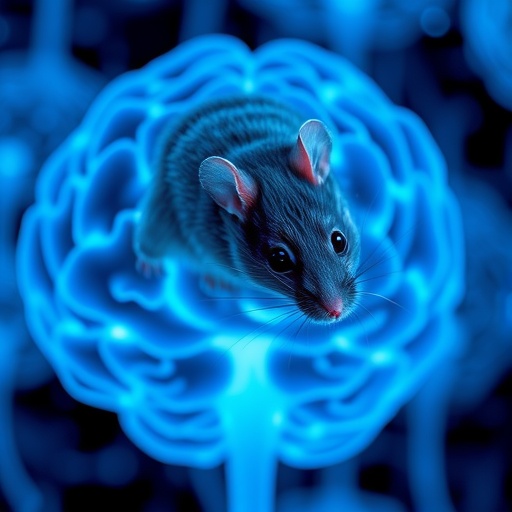In recent groundbreaking research, scientists have uncovered compelling evidence that N-acetylcysteine (NAC), a well-known antioxidant, significantly mitigates the devastating effects of ethanol-induced oxidative stress, neuroinflammation, and cognitive dysfunction in a genetically engineered mouse model of Alzheimer’s disease. This discovery not only sheds light on the intricate molecular mechanisms underpinning ethanol-related neurodegeneration but also opens new therapeutic avenues for neuroprotective interventions in Alzheimer’s pathology exacerbated by alcohol exposure.
The study, conducted using the APP/PS1 transgenic mouse model, which harbors mutations linked to familial Alzheimer’s disease, rigorously investigated the pathological interplay between chronic ethanol exposure and the progression of neurodegenerative processes. Ethanol, widely recognized for its neurotoxic properties, triggers the excessive production of reactive oxygen species (ROS), culminating in oxidative stress and neuronal damage. The APP/PS1 mice exposed to ethanol demonstrated exacerbated cognitive deficits, heightened neuroinflammatory responses, and increased oxidative stress markers compared to control groups, underscoring the deleterious synergy between genetic susceptibility and environmental toxins.
This compelling intersection of genetic predisposition and ethanol-induced neurotoxicity prompted researchers to explore NAC’s therapeutic potential, given its established role as a precursor to glutathione, the cell’s principal antioxidant. NAC’s capacity to replenish glutathione stores in the brain is crucial for neutralizing ROS and restoring redox balance, thereby curtailing oxidative damage. The administration of NAC to ethanol-exposed APP/PS1 mice resulted in a marked reduction of oxidative stress biomarkers, including malondialdehyde and 4-hydroxynonenal, indicating a robust antioxidative response that shielded neuronal integrity.
Beyond redox modulation, NAC exhibited profound anti-inflammatory effects within the central nervous system. Neuroinflammation, marked by the activation of microglia and astrocytes and elevated proinflammatory cytokines, plays a pivotal role in the progression of neurodegenerative disorders. The study demonstrated that NAC treatment attenuated the expression of key inflammatory mediators such as TNF-α, IL-1β, and IL-6 in the cerebral cortex and hippocampus. This dual antioxidative and anti-inflammatory action positions NAC as a potent neuroprotective agent capable of counteracting ethanol-induced neuroinflammation.
Perhaps most strikingly, these molecular ameliorations translated into significant improvements in cognitive performance. Utilizing established behavioral paradigms such as the Morris water maze and novel object recognition tasks, researchers observed that NAC-treated APP/PS1 mice subjected to ethanol exposure exhibited enhanced spatial learning, memory retention, and recognition abilities compared to their untreated counterparts. This cognitive rescue effect underscores NAC’s ability to preserve neuronal function and synaptic integrity amidst the toxic insult of chronic ethanol.
The mechanistic insights gleaned from this study highlight the relevance of NAC in restoring the disrupted homeostasis caused by ethanol. Oxidative stress and neuroinflammation are interlinked pathological states that exacerbate amyloid-beta aggregation and tau phosphorylation, hallmark features of Alzheimer’s disease pathology. By mitigating these factors, NAC may impede the progression of amyloid pathology and the resultant neuronal loss, thereby preserving cognitive functions.
Furthermore, the use of a validated Alzheimer’s disease mouse model renders these findings highly translatable to human physiology, offering hope for clinical applications in patients who suffer from neurodegenerative diseases complicated by substance abuse. Alcohol abuse is prevalent in populations at risk for or suffering from dementia, making the elucidation of protective strategies imperative for improving patient outcomes.
The study also underscores the importance of early therapeutic intervention in neurodegenerative diseases. Given the progressive nature of Alzheimer’s disease, intervening at the stage where oxidative stress and inflammation begin to escalate could significantly alter the disease trajectory. NAC, owing to its favorable safety profile and blood-brain barrier permeability, emerges as a promising candidate for adjunct therapy.
Additionally, this research complements ongoing clinical explorations of antioxidants in neurodegenerative disease management, reinforcing the notion that targeted modulation of oxidative stress can be a viable strategy. It provides crucial preclinical data that strengthens the rationale for clinical trials assessing NAC’s efficacy in Alzheimer’s patients, especially those with a history of alcohol exposure.
It is worth noting that while NAC exhibits promising therapeutic effects, the study emphasizes the complexity of neurodegeneration and the multifactorial nature of cognitive decline. Therefore, NAC treatment is best envisaged as part of a comprehensive therapeutic regime that includes lifestyle modifications, pharmacological interventions targeting amyloid and tau pathology, and supportive cognitive therapies.
The implications of these findings extend beyond Alzheimer’s disease. Given that oxidative stress and neuroinflammation are common denominators in various neuropsychiatric and neurodegenerative disorders, NAC’s modulatory effects could have broader applications. Disorders such as Parkinson’s disease, Huntington’s disease, and multiple sclerosis might benefit from NAC-based therapeutic strategies aimed at curbing oxidative and inflammatory insults.
Importantly, the study also delves into the dose-dependent effects of NAC, suggesting that optimizing dosing regimens might further enhance therapeutic outcomes. Future research is warranted to delineate the optimal timing, duration, and combination with other neuroprotective agents to maximize NAC efficacy.
In summary, the research presented offers compelling evidence that N-acetylcysteine effectively mitigates the harsh cognitive and neurobiological effects of ethanol exposure in an Alzheimer’s disease model, primarily through its antioxidative and anti-inflammatory properties. This advancement marks a significant stride toward developing targeted interventions that address the complex pathology associated with neurodegenerative diseases compounded by lifestyle factors such as alcohol consumption. As the field of neurotherapeutics advances, NAC stands out as a beacon of hope in the quest to preserve brain health and cognitive function amidst increasing environmental challenges.
Subject of Research: The study investigates the neuroprotective effects of N-acetylcysteine (NAC) against ethanol-induced oxidative stress, neuroinflammation, and cognitive dysfunction in an Alzheimer’s disease mouse model.
Article Title: N-acetylcysteine (NAC) ameliorates ethanol-induced oxidative stress, neuroinflammation, and cognitive dysfunction in APP/PS1 mouse model.
Article References:
Pan, X., Su, Z., Huang, Z. et al. N-acetylcysteine (NAC) ameliorates ethanol-induced oxidative stress, neuroinflammation, and cognitive dysfunction in APP/PS1 mouse model. Transl Psychiatry 15, 435 (2025). https://doi.org/10.1038/s41398-025-03496-z
Image Credits: AI Generated




